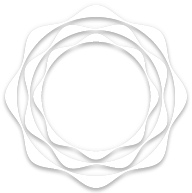Beirut a Cultural Hub (1955-1975) David Kurani
As seen through the Eyes of: A patron, an artist, a professor, and a gallerist
Author WAFA ROZ

Beirut a Cultural Hub (1955-1975)
The Dalloul Art Foundation (DAF) presents a four-part documentary series on the evolution of the art scene in Beirut during the 1950s-1970s. The series is based on life-history interviews which were conducted and filmed by DAF in 2020. The interviews chosen for this exhibition cover the social transformations that transpired during the three decades following Lebanon’s independence in 1943. The four protagonists in the series include an art patron, Cesar Nammour; a sculptor, Mona Saudi; a professor, David Kurani; and a gallerist, Odile Mazloum. Each of these characters lived during Beirut’s heydays, otherwise known as the “golden sixties,” and experienced first-hand the booming cultural scene of the city. Most importantly, they participated in making that scene.
Through personal narratives, this four-part documentary series narrates a key feature of the golden sixties: the blossoming of Beirut’s art scene into a vibrant and diversified cultural hub. It also narrates the story of the dispersal of that cultural hub after the onset of the Lebanese civil war in 1975. Artists relocated and cultural spaces shutdown during the war, including art galleries and art institutions, forcing many to cope and adapt to a new social reality. In a state of fragility, a mélange of passion and despair shines through each personal narrative.
During Lebanon’s formative decades of state-building (1952-1970), Beirut was becoming the cosmopolitan center of the Arab world. The financial sector thrived within the country’s free-market economy. Educational institutions and instructional spaces ballooned alongside publishing houses, galleries, and museums. Most notably, a café society flourished, part of which was the famous Horseshoe café that attracted many intellectuals and artists. Lebanon’s diverse social fabric, religious pluralism, and laisser-faire economy attracted investors, thinkers, writers, and artists from all around the Middle East, Europe, and the United States. Knowledge production and freedom of expression became a staple of Beirut’s golden era. For most of the Arab world, Lebanon became a safe haven of free expression and free association.
However, this period of state-building was also one of political contestation over Lebanon’s place in the Arab World. The Lebanese political scene was heavily affected by regional and international political antagonisms. The country’s political environment was caught up in a fierce political struggle between adherents of pan-Arabism versus Lebanese nationalism and leftist movements versus right-wing politics. In addition, the Arab-Israeli conflict, and the relocation of the Palestinian Liberation Organization (PLO) to Lebanon in (1968-1982) heightened political tensions. After a series of political struggles, the Lebanese civil war broke out in 1975. Cosmopolitan Beirut was at an impasse.
The violence of the war divided Beirut into West and East Beirut. As a result, several art spaces shifted away from central Beirut and relocated to other regions in Lebanon. Key art patrons, artists, and innovators of the pre-war era adapted to a new disruptive reality that shaped the art scene in the post-war years.
The Ramzi and Saeda Dalloul Art Foundation, 2022
This video was exhibited at the Contemporary Art Museum of Lyon in the Beirut and the Golden Sixties: A Manifesto of Fragility, as part of the Lyon Biennal. Curated by Sam Bardaouil and Till Fellrath.
Biography
David Kurani – ‘A Professor’ (1944-)
Multi-talented artist David Kurani was born in Virginia in 1944 to a Lebanese father and an American mother. He grew up in Beirut, earning his designation as a Lebanese artist. He studied fine arts at the American University of Beirut (AUB) and theatre in London, and on his return to Lebanon, in 1968, he taught both art and theatre at AUB alongside former teachers Arthur Frick and John Carswell as well as Joseph Tannous, Noha El Radi and Helen Khal. He was on the founding committee of the notable Open-Air Shows (1969 – 1971) inaugurated on the International College (IC) steps.
Besides painting portraits and watercolor landscapes, Kurani has directed and written over 50 theatrical plays. He also designed the sets for over thirty-six stages and illustrated Arabic children’s books for Dar Al Mashrek Publishers. Plus, he worked in poster graphics, cartoons, and music composition. However, Kurani's preferred artforms remain painting and theatre.
Kurani’s faith and spirituality guide most of his works: he had accompanied some of his watercolor landscapes, such as those depicting the Cedars of Lebanon and the Ain Mreisse Cove, with biblical readings or theological anecdotes.
Kurani explained once that the luminosity of watercolor and the feeling of mystery it conveys, enables him to depict “supernatural light.” Painting nature in such a manner is Kurani’s way of celebrating the creation of the God in which he so ardently believes.
Check out other Beirut a Cultural Hub documentaries:
Beirut a Cultural Hub (1955-1975) Cesar Nammour
Beirut a Cultural Hub (1955-1975) Mona Saudi
Beirut a Cultural Hub (1955-1975) Odile Mazloum


